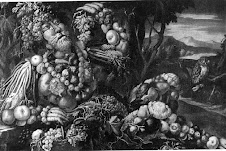While I didn't write about it at the time, I wanted to share my success with extending my tomato crop this fall- we ate our last homegrown tomato December 15!!
In late September when DUG shut off the garden water and the threat of frost was in the air every night, my tomatoes had just gotten going. Most of them were full with big green fruits and I couldn't bear to lose them, especially after not having a huge crop during the summer. I just needed one more month!
I didn't have one more month, so from the smaller plants, I plucked off the really good tomatoes and threw these in a cardboard box (after washing). I didn't put them in a dark place or rinse them with a weak bleach solution like recommended - only because they started ripening before I had time to!
The large plants with a ton of fruit, I dug out of the ground and hung upside down in my garage. These ripened massive delicious tomatoes over the next two months - every time i drove into my garage, there was another delicious German Red Strawberry or Rose tomato waiting on the vine to be plucked and eaten.
The majority of these green tomatoes ripened and were almost as delicious as they had been in the summer (and certainly 10x better than anything available in the store).
When I brought in those last plants, I had a more ripe tomatoes than I could eat in a week available right then. I froze about 2 gallon size bags and, after I ran out of ripening green tomatoes in December, have been making
stirfries and stews with the frozen ones. They add such a rich flavor -- so uniquely heirloom its ridiculous! We made
tikka masala loaded with spices and the most distinct flavor was the tomatoes.
Last summer, I was worried that my choice of 8 heirlooms was not producing enough for the amount of work and space. Now I realize that it was actually just that the plants required a longer season than I have here in Denver (in an urban garden that the water line can't be turned on until June), even with starting seeds in milk jugs on the porch! In 2009, I will rely more heavily on starter plants. I, of course, will Have to get a couple seeds packs, because they are so fun, but without a lamp to get them growing big and healthy early on, plants might be the primary way to go. I love
Tomato Fest for heirloom seeds, and they recommend
Heirloom Plants for. . . well . . . heirloom plants. (Looks like i need to get my order in by February - just found something very fun to do today!)







